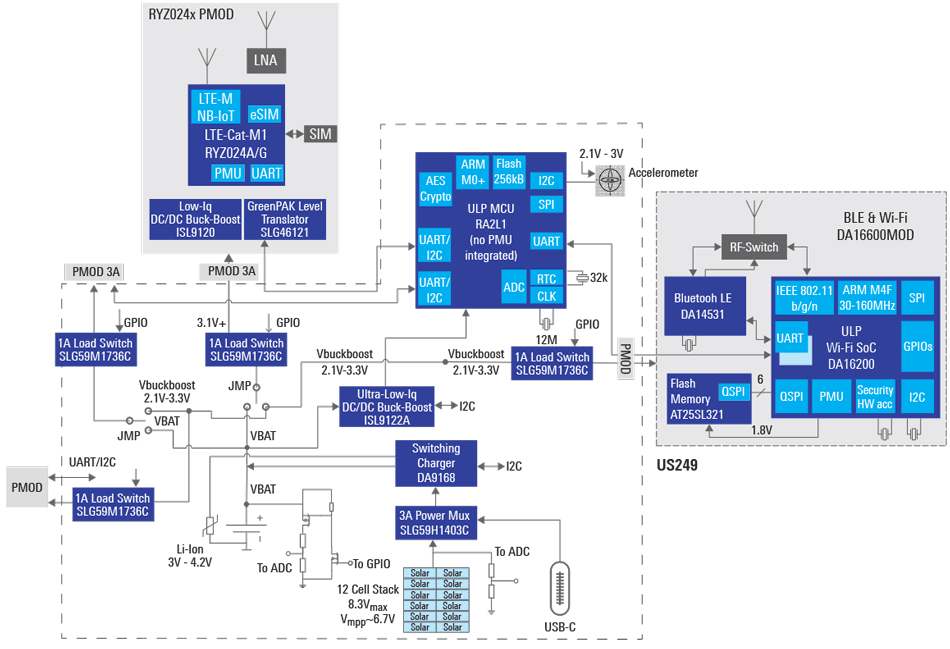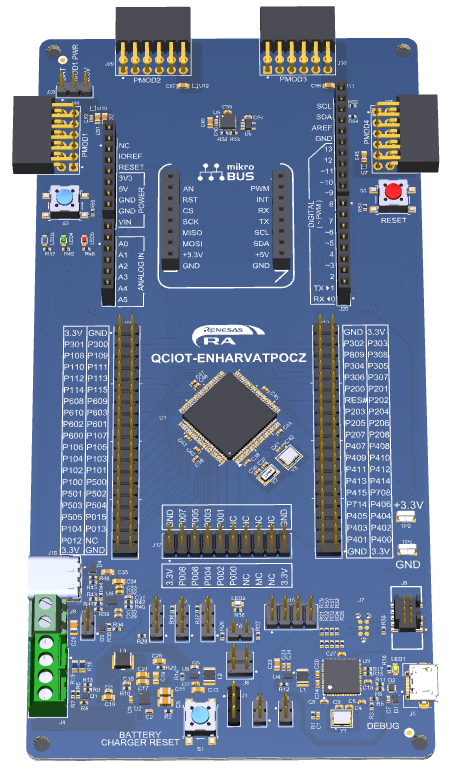We are all getting kind of overwhelmed by the amount of tracking going on in our everyday lives. One thing we do not get tired of is tracking things we value. A Prime example (pun intended) is your Amazon delivery. In the past, you knew when it was shipped and you knew when it arrived all controlled by barcoded labels that were scanned as the package moved along. Now, you can go on the web and get information on how many stops the truck is from your home. All done through the magic of RF connectivity.
So, if the barcoded label with its required "human intervention" is good enough tracking for the asset in question, stick with it, it is very low cost. But if you need a little more automation, and want less human intervention, then stick on one of Renesas' winning combination Smart Asset Tracking Labels (Figure 1). Anytime it is within "shouting distance" of a Bluetooth® Low Energy (LE) network used for tracking, it will report itself, whether this is in a shipping container or truck with a long-range gateway, or maybe in the warehouse moving towards shipment. Great for tracking many assets with little or no human intervention.
But what happens when the asset moves away from the Bluetooth LE network? No more reports. That would be fine if it was a package moving through the mail system, but what if it is something more significant?
You install a system in a remote location, that is supposed to stay stationary for 3 months. No access to the grid for wired power. So, no Wi-Fi or Bluetooth LE, you use a cellular radio using CAT-M1 and it only needs to be in contact with a cell network. While there, the tracker periodically reports the status (temperature, humidity, functional operation, etc.). This is fine, except a cell radio can use a bit of power transmitting, and a battery set could easily be depleted. The solution, add energy harvesting and rechargeable batteries. Battery size would be such to allow a unit to operate through some number of transmissions and some number of cloudy days for example.
A recent problem that could be handled by such a solution was heavy equipment being stolen from construction sites during the evenings. If you had such an asset tracker and saw your equipment moving in the evening, you could report it and save $100K dollars of equipment (https://www.heavyequipmentrepairaz.com/anti-theft/).
Now, you tell me you do not have cell connectivity; you can explore attaching other long-range radio networks such as a LoRa network.
Long-term battery for remote installation, no issue, if you use energy harvesting, solar is shown in our Solar Powered Location Tracker winning combination (Figure 1), but clearly, there are other options such as thermal or vibration depending on installation. So, the Asset tracking can be customized for almost any scenario:
- Accelerometer to detect if your asset is moving
- Optional/Customized radio connectivity
- Optional sensor support via PMODs for system status monitoring
- Optional wired connectivity through UART PMODs
- Battery powered with energy harvesting charging
- Optional line powered through the USB-C power pack

It is basically up to you whether you can track your asset or not. Just design the asset tracking system per your requirements. Renesas’ "Smart Asset Tracking Label" winning combination is a good baseline to start with and then customize through PMODs as needed. You can likely get a good "proof-of-concept" without lifting a soldering iron (Figure 2).

Visit the winning combinations page, https://www.renesas.com/win to see more solutions that help our customers accelerate their designs to get to market faster.

